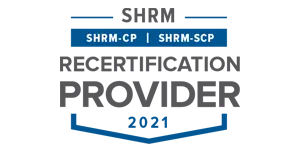Process improvement is the crux of all things Six Sigma. For us, we find that reducing variation is imperative to successful process improvement. But how do you achieve this? The answer? The five ways for process improvement methods. Today we look at each of these five ways in detail. Join us as we discover the five ways to improve ANY process.
-
First of the Five Ways: Eliminate Non-Value-Adding Steps
Firstly, to remove your non-value-adding steps, you need to have a strong understanding of how processes work. Also, ask yourself: What happens in a process? What does it do? We recommend you conduct a Process Walk (aka Gemba Walk, an informational tour of the process area, involving structured interviews with staff). By spending time with the people involved you can build an understanding of how processes flow. Once you know the steps involved, you can zero in on unnecessary steps, and eliminate them accordingly.
-
Improve Your Measurement System
Secondly, it’s important to understand how data relates to Six Sigma. When you collect data, you can perceive how variation arises. Variation accumulates in both the process and your measurement system. As such, measurement variation depends on how clearly you define your operations for each measure. For example, if you were creating a recipe for a cake, you might include a spoonful of one ingredient. But what constitutes a spoonful? Clarity is essential, so instead of a spoonful, describe your measure in as much detail as you can, e.g. half a teaspoon. That way, you’ll avoid misunderstandings.
-
Minimize Common Cause Variation
Experts break down variation into two categories: common and special causes. The two categories are separated by how frequently they appear in processes. Common cause variation appears regularly and should be labeled using a Fishbone Diagram. Reducing common cause variation relies on how you stratify your data. Consider your process location, how early or late it appears, and timing. Significant differences in your processes will help you recognize issues. Design of Experiments is another great method of gathering information as it requires active engagement in process changes.
-
Minimize Special Cause Variation
Special cause variation factors into when and where process change appears. Change can have a positive or negative impact. Being able to identify the when, where and why will help you understand and identify root causes. Special cause variation consists of three different actions:
- A unique change outside control limits, like a traffic collision during a blizzard.
- A process shift to a lower performance level, i.e. a sudden change in the number of packages delivered by a new.
- A gradual process change over time, resulting in a trend, such as the steady increase of someone’s hair length.
-
Final Way: Change Your Mean to Improve Process Capability
Finally, to understand how to improve your process capability, you should know how your mean affects it. While the other four ways focus on variation, the fifth teaches that items that can be specified are positive. As such, those that don’t are negative. Your process capability describes your ability to deliver outputs within your specifications. If variation is high, then your mean will be centered between two specifications. This means more reworking will be required since more values will fall on one side than the other. Moving the mean to an equal location will reduce the level of rework required. This streamlines your process capability, improving your results.









No responses / comments so far.